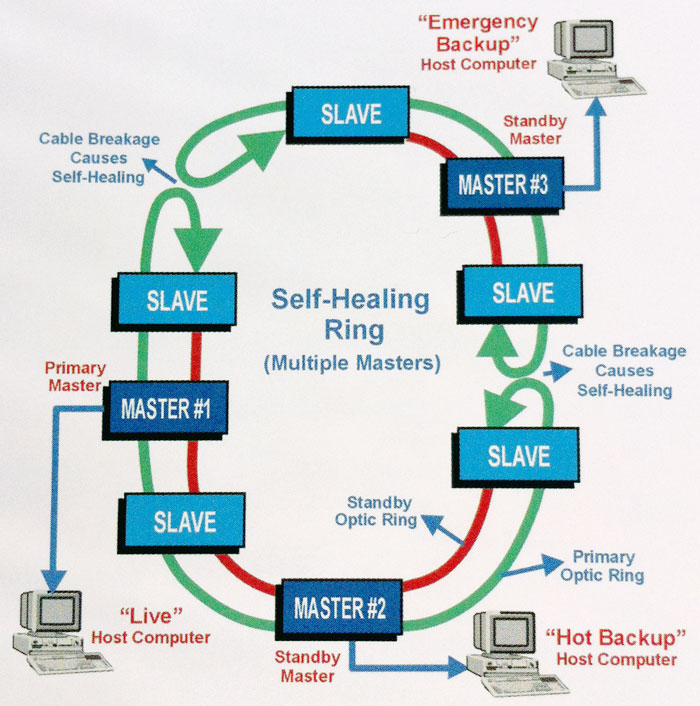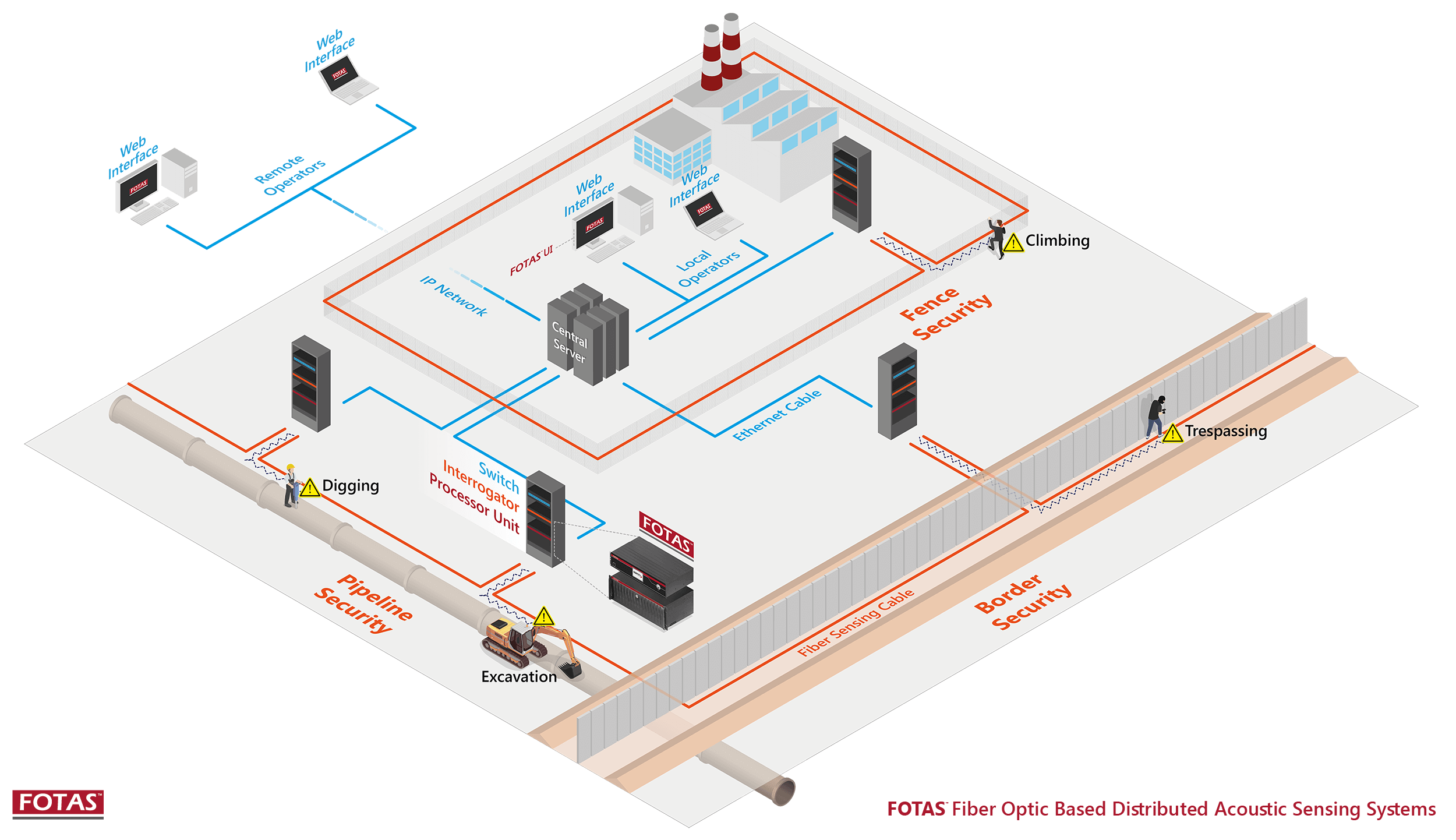Improve Your Security With Advanced Fiber Optic Security Equipments
In an era where protection is paramount, advanced fiber optic safety systems present an engaging remedy for boosting safety and security throughout various environments. What ramifications do these improvements hold for future safety steps?
Advantages of Fiber Optic Safety And Security
Harnessing the benefits of fiber optic modern technology substantially improves safety and security systems across various applications. One of the key advantages is the increased data transfer capacity, enabling for the transmission of large quantities of data at broadband. This is especially crucial for real-time video clip monitoring, where high-resolution feeds can be sent without latency, making certain immediate action capabilities.
In addition, fiber optics display exceptional resistance to electromagnetic disturbance, which is crucial in environments with possible signal disruptions. This integrity makes certain regular efficiency in vital safety operations. Additionally, fiber optic cords are less prone to touching and unapproved accessibility contrasted to conventional copper circuitry, thus enhancing information integrity and privacy.
One more notable benefit is the durability of fiber optic systems; they are a lot more immune to environmental aspects such as dampness, temperature changes, and harsh materials. This strength translates to lower upkeep costs and longer life expectancies for protection setups.
Lastly, the lightweight nature of fiber optic wires facilitates easier installation and directing, especially in complicated infrastructures (fiber optic security system). Inevitably, the combination of fiber optic innovation right into protection systems not only strengthens protection steps but additionally optimizes functional performance
Key Functions to Take Into Consideration
When evaluating fiber optic security systems, several vital functions should be taken into consideration to make certain optimal performance and efficiency. First, examine the system's detection variety and level of sensitivity; an extensive variety enables checking large areas, while high level of sensitivity makes certain that also minor disruptions are discovered without delay.
Next, consider the combination abilities of the system. A fiber optic safety system ought to flawlessly interface with existing safety and security procedures such as cameras and alarms, creating a cohesive security network.
Resilience and ecological resistance are additionally vital functions. Guarantee that the system is made to hold up against rough climate condition and prospective physical dangers, as this will prolong its functional lifespan.

Lastly, consider the scalability of the system. A robust fiber optic security system must be quickly expanding to fit future requirements without considerable overhauls. By thoroughly taking into consideration these functions, you can choose a fiber optic security remedy that improves security and security in your environment.
Installation Process Overview
To successfully carry out a fiber optic safety and security system, a systematic installment process is essential. This procedure begins with a comprehensive website evaluation to establish the specific safety and security needs and to identify optimal areas for fiber optic cable televisions and security tools. Following this assessment, the installation group will create a detailed plan, including cable television pathways, necessary devices, and compliance with neighborhood regulations.
Following, the installation involves laying the fiber optic wires, ensuring they are shielded from ecological aspects and physical damages. Appropriate handling strategies are critical, as fiber optic wires are sensitive and can be conveniently damaged. After the cabling is installed, connectors and terminations are meticulously completed to guarantee signal honesty.
The succeeding stage contains setting up protection devices such as cams, movement detectors, and alarm systems, all integrated with the fiber optic network. Extensive screening is performed to verify that all elements are functioning correctly and to ensure ideal performance.

Comparing Fiber Optic to Standard Solutions
The development of safety and security technology has led to substantial advancements in the comparison in between fiber optic systems and standard copper-based systems. Fiber optic systems make use of light to transmit information, using superior data transfer and rate compared to their copper counterparts. This causes boosted information transmission capacities, making fiber optics ideal for high-resolution video clip surveillance and real-time monitoring.
Additionally, fiber optic cords are resistant to electromagnetic interference, minimizing the likelihood of signal degradation caused by exterior variables. This characteristic makes sure constant performance, also in tough settings. On the other hand, traditional copper systems are more susceptible to disturbance, resulting in prospective susceptabilities in safety and security applications.
Resilience is an additional benefit of fiber optic systems. They are much less prone to damage from ecological factors such as dampness and temperature level variations, which can why not try this out compromise copper electrical wiring. Fiber optics are lighter and thinner, permitting for simpler installation and minimized physical footprint.
Nonetheless, typical systems have informative post a tendency to have reduced first costs, making them appealing for budget-conscious jobs. While fiber optic systems might need a higher ahead of time investment, their lasting benefits-- such as reduced upkeep costs and higher dependability-- typically surpass the preliminary cost, placing them as a remarkable choice for contemporary security demands.
Future Patterns in Safety And Security Technology
Emerging trends in protection technology are poised to transform the landscape of security and threat detection - fiber optic security system. As companies increasingly deal with sophisticated threats, technologies such as fabricated knowledge (AI) and artificial intelligence (ML) are becoming important to safety and security systems. These modern technologies enhance the capability of fiber optic systems by allowing real-time visit this page information analysis, identifying abnormalities, and automating responses to prospective violations
Furthermore, the combination of the Web of Things (IoT) is reinventing security frameworks. IoT tools can provide comprehensive situational recognition and promote smooth interaction in between various security components. This interconnectedness permits a lot more efficient tracking and faster incident feedback times.
Biometric verification is additionally gaining energy, supplying a greater degree of security via unique physical qualities. As this innovation develops, it is most likely to be included into fiber optic systems for enhanced gain access to control.
Final Thought
In final thought, advanced fiber optic safety systems stand for a substantial improvement in security and security technology. The transition from standard systems to fiber optic options reflects a growing pattern in the direction of much more efficient and effective safety steps in a progressively complicated technical landscape.
 Jenna Jameson Then & Now!
Jenna Jameson Then & Now! Andrea Barber Then & Now!
Andrea Barber Then & Now! Marques Houston Then & Now!
Marques Houston Then & Now! Gia Lopez Then & Now!
Gia Lopez Then & Now! Tiffany Trump Then & Now!
Tiffany Trump Then & Now!